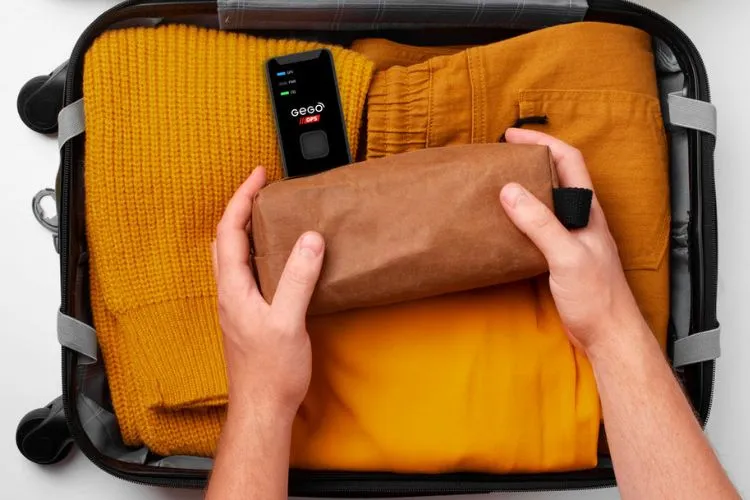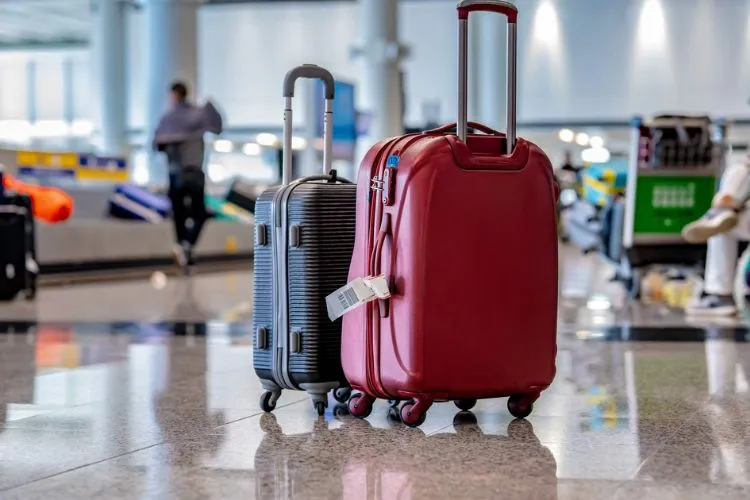Traveling with art supplies isn’t always straightforward. Among the questions that might cross an artist’s mind before boarding a plane, “Is acrylic paint allowed in checked luggage?” is quite common.
Acrylic paints, though not generally considered dangerous, have specific guidelines for air travel. In this guide, we will explore the various aspects of traveling with these paints and provide you with the knowledge you need for a hassle-free journey.

Understanding Acrylic Paint Composition
Acrylic paints are popular due to their versatility and ease of use. These paints are primarily water-based, which means they are made of pigments suspended in an acrylic polymer emulsion.
Unlike oil paints, they don’t need toxic solvents for thinning or cleaning up. However, while the water-based nature of acrylics suggests they are non-hazardous, they still contain chemicals that might raise concerns during air travel.
General Airline Regulations for Transporting Paints
When it comes to bringing any kind of paint on a plane, the International Air Transport Association (IATA) has guidelines to ensure safety.
These rules classify materials based on their flammability and toxicity. While acrylic paints are generally safe, they are not exempt from these regulations.
Most airlines align with IATA’s restrictions on transporting hazardous materials. The emphasis lies more on solvent-based paints, but even with acrylics, you can’t just toss large quantities into your luggage.
The regulations specific to paints focus on their capacity for combustion. Fortunately, for artists, small quantities of acrylic paint are typically permissible in checked baggage.

Is Acrylic Paint Allowed in Checked Luggage?
Can You Pack Acrylic Paint?
Yes, you can—within limits. Airlines usually allow you to pack no more than 5 liters (or 70 ounces) of non-flammable paint.
Acrylic paints fall into this non-flammable paint category. However, you still need to adhere to the size and quantity restrictions, which can vary by airline.
Tips for Packing Acrylic Paints Safely
Packing paint requires careful attention. Place your paint tubes in a plastic bag with a secure seal. This way, if there is a change in cabin pressure leading to leakage, it won’t spill onto your clothes or valuables.
Labeling your materials with a ‘FRAGILE’ sticker can be a good practice. It isn’t mandatory but provides a visual cue for baggage handlers.
Special Considerations for International Travel
Traveling internationally with paint complicates things. Different countries have different rules. For instance, some countries are strict about flammable substances and may have regulations that impact the transport of seemingly benign items like acrylic paint.
Before you travel, contact the airline and ask about their policies regarding acrylic paints. A quick phone call or email could save you a lot of trouble at the airport.
Also, look up customs regulations for the country you’re visiting. If you’re relocating or planning a longer trip, consider shipping your paints separately through a courier service.
Airlines and Acrylic Paint: Know Before You Go
It’s crucial to consult airline policies before traveling with artistic mediums like acrylic paint. While major airlines often have standard policies, some may adopt more stringent rules. Do your due diligence and avoid any unwelcome surprises.
Ready to Muster: Final Checklist and Tips
Pack only what you need. Secure your tubes in leak-proof bags. Clearly label your baggage. Prepare your documents, such as Material Safety Data Sheets (MSDS), to prove the safety of your supplies.
And most importantly, familiarize yourself with the guidelines provided by the airline you’re flying with.

Case Studies: Traveling with Acrylics
Traveling as an artist often means bringing your creative tools along. Through examining real-life experiences, we can uncover a wealth of knowledge about the dos and don’ts of traveling with acrylic paints.
One artist learned the hard way when their improperly packed paint tubes burst under cabin pressure changes, resulting in a colorful suitcase interior but a less-than-joyful unpacking experience. The lesson?
Double-securing paint tubes in zip-lock bags and cushioning them among clothes could prevent such mishaps.
Another lesson came from an artist who managed to navigate international customs smoothly by preparing a comprehensive list of their supplies, along with Material Safety Data Sheets for each paint. It underscored the importance of being transparent and prepared.
These stories highlight two major takeaways for traveling artists: first, meticulous packing is non-negotiable, and second, equipping oneself with thorough documentation can ease the journey through customs.
By learning from these shared experiences, artists can make informed decisions, ensuring their paints—and their spirits—remain intact upon arrival.
You may also like: Does Acrylic Paint Burn?
Frequently Asked Questions (FAQs)
Can you bring acrylic paint tubes in your carry-on bag?
Carry-on bags have stricter rules, mainly due to the liquids rule, that limit containers to 3.4 ounces (100 milliliters) each. This rule makes it challenging to carry tubes of acrylic paint in your hand luggage.
What happens if you don’t declare art supplies at customs?
Failing to declare art supplies can lead to penalties. This might include fines or even the confiscation of your art supplies. It’s best to declare all items that could be questionable.
Are there any alternatives to flying with acrylic paints?
Yes. One alternative is shipping your materials to your destination in advance. This option removes the concern about airline restrictions but does require additional planning and possible increased costs.
How do you pack large quantities of paint for a flight?
For extensive amounts of paint, you must ship your supplies separately. Get in touch with the airline’s cargo department or a shipping company for details on how to send large quantities safely.
Can leaking paint cause problems with airport security or damage luggage?
Leaking paint can seem suspicious on an X-ray machine and may prompt a security check. To prevent damage to your luggage and contents, make sure each paint tube is tightly sealed and wrapped in a protective layer.
Conclusion:
So, is acrylic paint allowed in checked luggage? In summary, yes, however, it’s subject to guidelines that ensure safety during flight.
By familiarizing yourself with airline and international policies, packing carefully, and planning ahead, you can continue to create art wherever your travels take you.
Traveling with art supplies doesn’t have to be inhibiting. With the right knowledge and preparation, artists can safely bring their medium of choice, like acrylic paint, along for the ride.
The key is to research, pack properly, and stay informed. Happy travels, and may your artistic journey be as colorful and unrestricted as your palette!

Meet Isabella Anderson, your acrylic painting mentor with over a decade of brush-wielding mastery. Dive into the colorful world of acrylics with her expert guidance, featured exclusively on ‘Acrylic Authority.’ Unleash your inner artist and explore the limitless possibilities of this versatile medium alongside a true acrylic aficionado.
